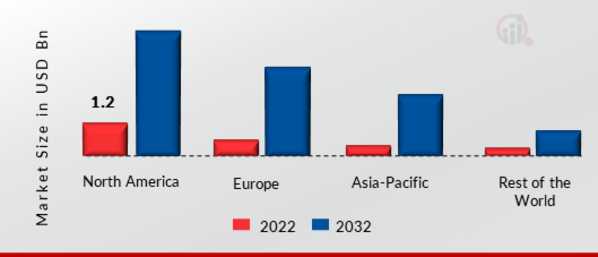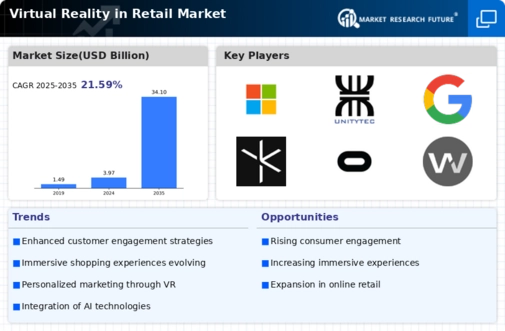By Region, the report provides market insights into Asia-Pacific, Europe, North America, and Rest of the World. North American virtual reality in the retail area will dominate this market. The increasing market revenue in the U.S. is the primary cause of the market expansion in North America. The United States is home to many technologically advanced companies, like Apple, Inc., Microsoft, Magic Leap, and Google LLC, and it conducts considerable VR research. Also, the American government is investing in virtual technology, which will help the market.
For instance, the US government and army committed USD 11 billion to train its officials in virtual, augmented, and mixed reality.
Further, the leading countries studied in the market report are U.S., Canada, German, UK, France, Spain, Italy, Japan, China, Australia, India, South Korea, and Brazil.
Figure 4: VIRTUAL REALITY IN RETAIL MARKET SHARE BY REGION 2022 (%)
 Source: Primary Research, Secondary Research, Market Research Future Database and Analyst Review
Source: Primary Research, Secondary Research, Market Research Future Database and Analyst Review
Europe's virtual reality in the retail market accounts for the fastest market share. This results from the wide use of VR technology across different industry sectors, particularly in the gaming and automotive sectors. The regional market expansion has been hastened by the quick development and adoption of potent VR hardware targeted at the gaming community in European nations. Further, German virtual reality in the retail market held the major market share, and the UK virtual reality in the retail market was the fastest-growing market in the European region
The Asia-Pacific Virtual Reality in Retail Market is estimated to expand at a rapid rate from 2023 to 2032. China, a prominent distributor of HMDs and other VR-related hardware, saw a considerable increase in virtual reality in retail. The market is growing in Southeast Asian nations due to technological developments. The commercial launch of 5G in Japan in 2019 prompted telecom firms to apply creative thinking to provide platforms for augmented reality (AR) and virtual reality viewing that use 5G connectivity.
Moreover, China’s virtual reality in the retail market held the largest market share, and Indian virtual reality in the retail market was the fastest-growing market in the Asia-Pacific region.



















Leave a Comment